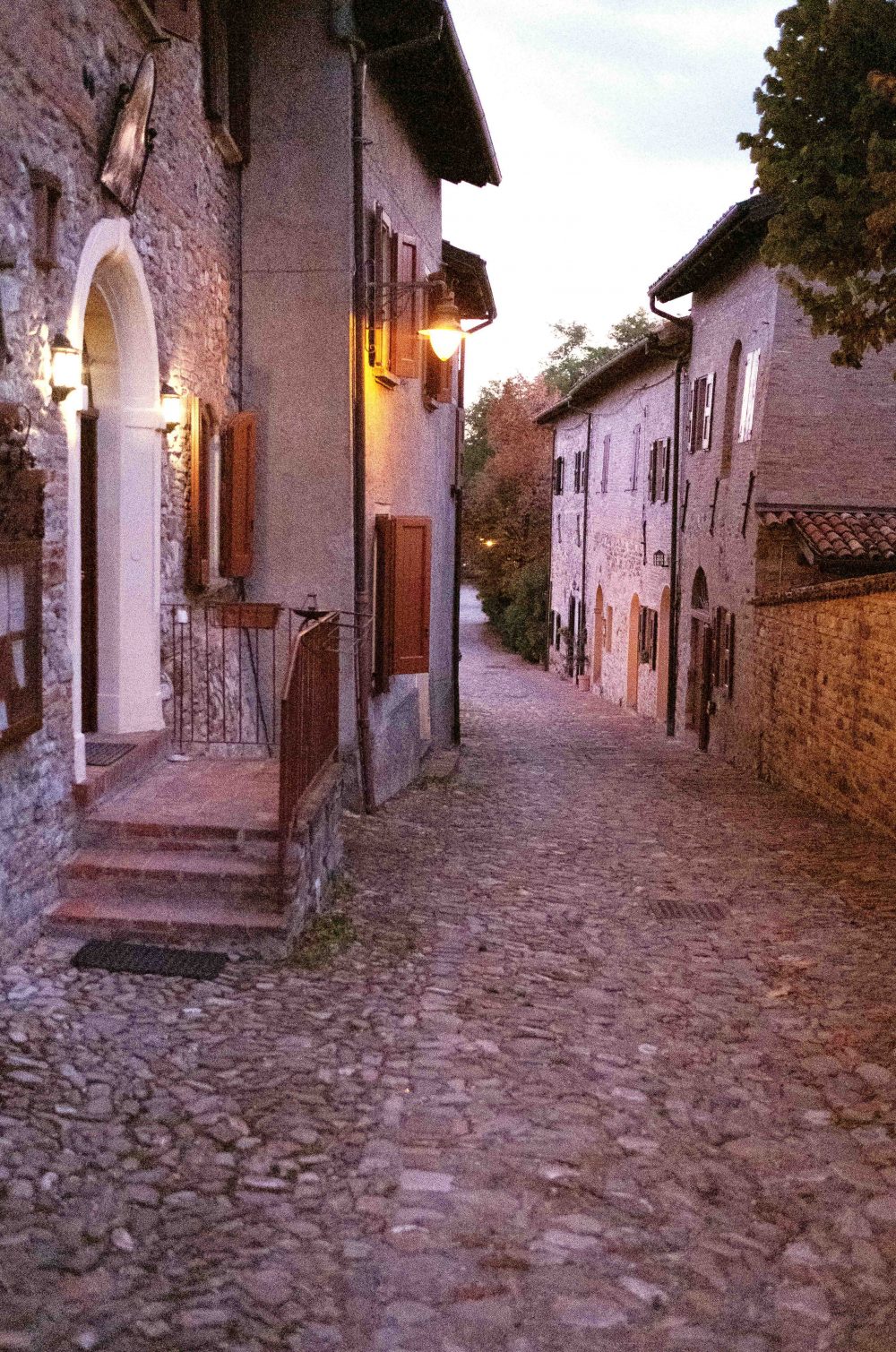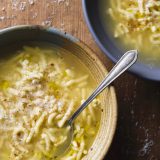Monteveglio is a tiny village on top of a mountain roughly 12 miles west of Bologna, featuring stone houses and cobblestone streets closed to traffic. It could easily double as a Universal Studios set; the one that offers the “authentic” rural Italian experience. Remains of Roman villas date back to the first century A.D., though the area has been inhabited since the Neolithic period.
There are two main attractions: the pieve, or rural church that has a baptistery, and our main destination, a small restaurant/hotel called Trattoria del Borgo. The church sits at the top of the summit; a monk in classic garb (brown robe, rope belt) except for conspicuous earmuffs is mowing the lawn, all but oblivious to the village’s comings and goings.
I walk the cobblestone streets, trying to see past the facades that obscure private, shaded back gardens but can catch only glimpses through half-open wooden gates, one or two ancient bicycles just beyond the entrance. The view of the valley is stunning and uniquely Italian. These lands have been cultivated for thousands of years, and nothing looks wild or out of place. The light is ebbing with a big-screen glow, and it is time for my cooking lesson.
Trattoria del Borgo’s owner, Paolo Parmeggiani, is thoroughly modern in the Italian style: affable, charming and the consummate host. On his stone patio overlooking the valley, he explains some of the culinary history of the region. After the wheat was harvested, fields would be burned and any remaining wheat berries would be gathered by the poor, hence the term farina dei poveri. A related term—cucina povera—is an important concept in Italy. It combines a style of cooking that is authentic, local and from the land.

The town may be old, but the cooking isn’t.
Other common culinary terms are cucina espressa and cucina immediata—which also describe passatelli, the quick homemade pasta dish we are about to make: a mixture of breadcrumbs, eggs and grated cheese, passed through a potato ricer-like passatelli maker into boiling water and served with chicken broth.
The entrance to Trattoria del Borgo is up a short flight of stone steps into a small wine bar, reminding me of an Austrian gasthaus—small, dark and intimate. Up a second flight of stairs, one reaches the kitchen; a small prep area leading into a tiny, modern workspace, plenty of room since the trattoria has just six tables.
Parmeggiani’s menu is a mix of simple classics (tagliatelle verdi con ragù al classico Bolognese) and more daring options such as the millefoglie di lingua di manzo (beef tongue with a salsa verde) or that evening’s passatelli, served not with the traditional broth but with a white sauce made from rabbit, pheasant and guinea fowl. Hardly cucina povera! This ability to change gears from poor to rich, from old to new, is very much in evidence in the Bologna region. The town may be old, but the cooking isn’t.
Parmeggiani has three bowls prepared, one filled with breadcrumbs, one with eggs, and the other with finely grated Parmesan. (Parmigiano-Reggiano is made in Emilia-Romagna and finds its way into almost every dish.) I ask about the recipe and learn that one uses six handfuls each of breadcrumbs and cheese, plus eggs as binder.
He combines the mixture by hand, which takes no more than two minutes, until he has a soft dough, which he places into a metal passatelli maker. He extrudes the dough over boiling water, cutting it into short lengths with a knife, and cooks it for just a few minutes, sim- ilar to spaetzle.
The only other ingredient besides salt is nutmeg—which, oddly enough, makes all the difference, adding just enough interest to provide character. Passatelli is served in a bowl with chicken broth and, if you are in Emilia-Romagna in the fall, copious shavings of modestly priced white truffles (which, at the outset of the season, are a slightly disappointing mix of potato and truffle). It is one of the best dishes of my life and also the fastest.
That’s it. Cucina espressa, as well as povera—one more reminder that the best food in the world is both simple and local.




